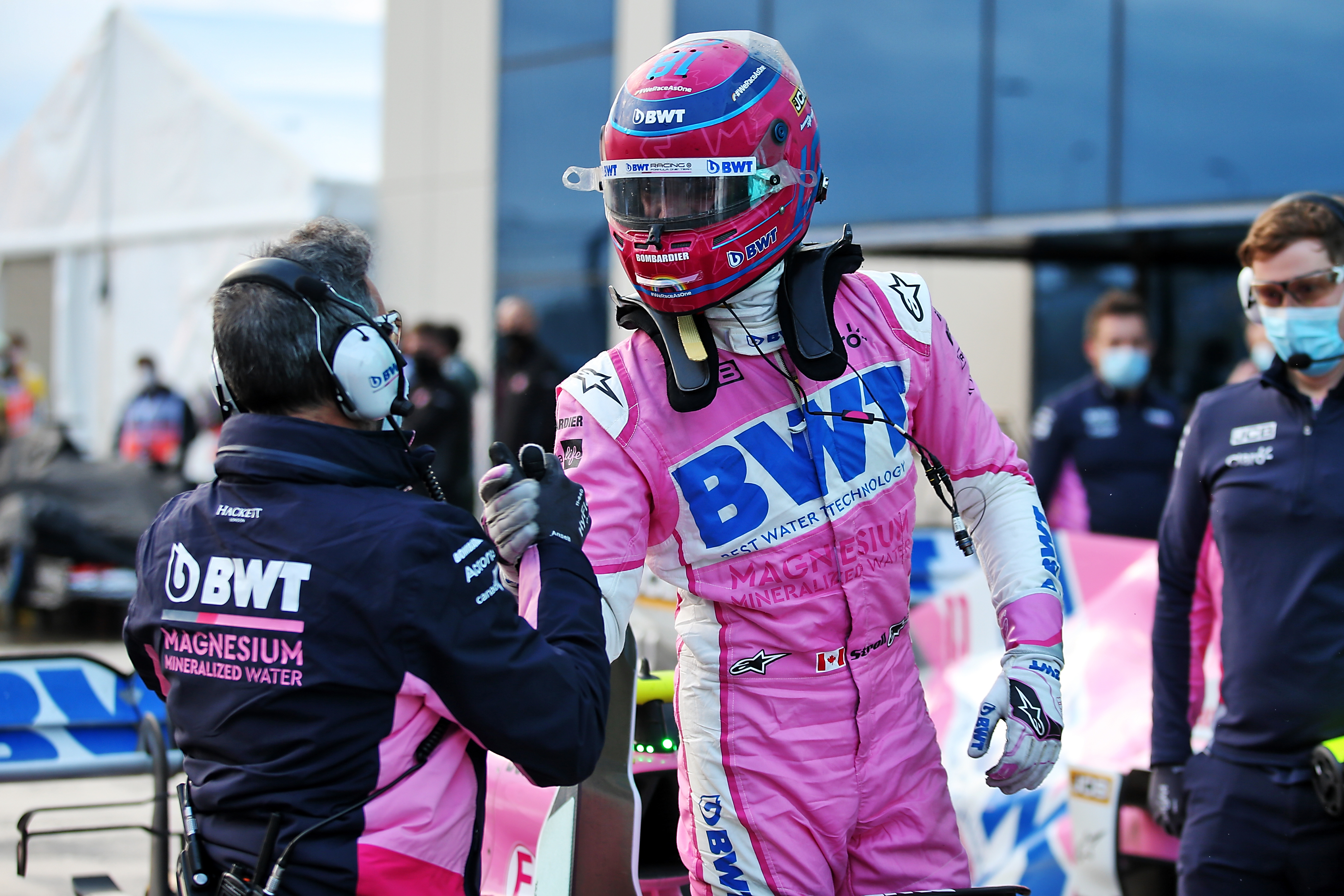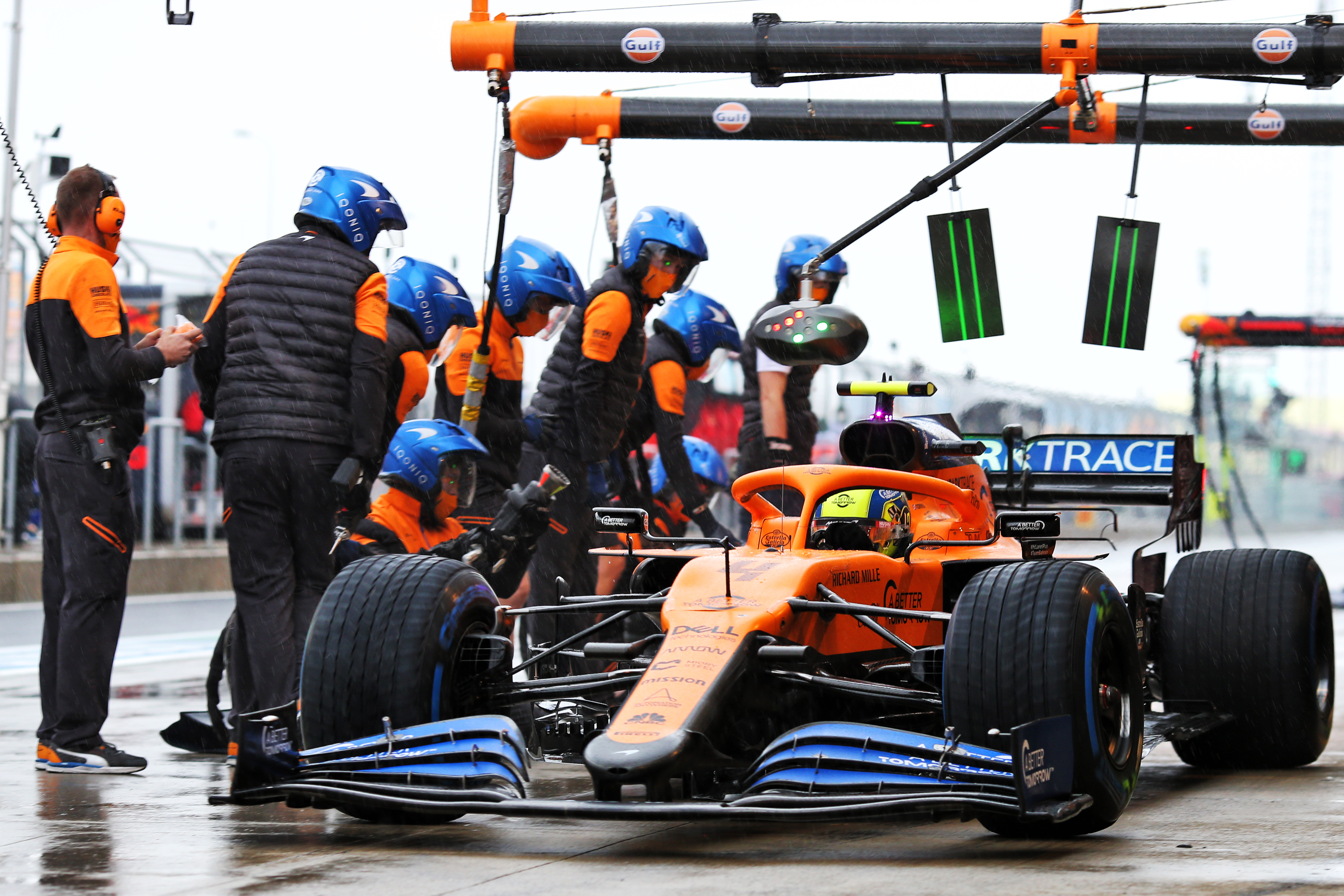Up Next

The FIA announced two yellow flag summons shortly after the conclusion of the qualifying for the Turkish Grand Prix – one for Lance Stroll and his Racing Point team, and one for Lando Norris and his McLaren team.
But while Stroll was not assessed any sort of penalty, with the stewards ruling “no further action” in his case, Norris picked up a hefty five-place grid drop.
This was despite the details of the two cases being similar in many ways.
Norris’s faux-pas was in Q1 and Stroll was investigated for a Q3 lap, but in both cases the track was in the process of drying – which is acknowledged in both verdicts. The changing track conditions automatically boosted the drivers’ chances of improving on their existing best times.
In both cases, the drivers made an effort to slow for yellow flags. The verdict for Stroll reads that “car 18 [Stroll] clearly came off the throttle, coasted into the corner, and then accelerated when clear of the incident”.
Likewise, it is acknowledged that “telemetry shows that car 4 [Norris] slowed in the sector [where the yellow flags were] and resumed speed after the incident”.
And of course, both were summoned over an alleged breach of the same article of Appendix H of the FIA International Sporting Code, and the same section in the Race Director’s Event Notes for the Turkish GP. The two of those broadly outline the same thing.

However, the reason for why the stewards showed lenience to Stroll and yet harshly penalised Norris is very simple, and has to do with the nature of yellow flags deployed.
In Stroll’s case, his team-mate Sergio Perez going off track up ahead yielded a single-waved yellow flag.
As outlined in the race director’s notes, under single-waved yellows “it must be clear that driver has reduced speed in the relevant marshalling sector”. The driver is also not allowed to overtake unless in case of force majeure with the car that they are passing.
Stroll didn’t pass anyone under yellows – and in the stewards’ eyes, though “sector times do not clearly show this as the track was rapidly drying”, he slowed sufficiently. Therefore, he was let off.
However, the yellow flags for the beached Williams of Nicholas Latifi were double-waved. Race director’s notes make a distinction that in the case of double-waved yellows a driver “must reduce speed significantly and be prepared to stop”.
“In order for the stewards to be satisfied that any such driver has complied with these requirements it must be clear that he has not attempted to set a meaningful laptime, for practical purposes this means the driver should abandon the lap,” the notes add.
There is no indication from the stewards that Norris did not slow sufficiently at the site of the incident, but he did set an improved time, which obviously contravenes the above directive.
This means he and McLaren effectively ignored double-waved yellow flags, which as per precedent carries with it a five-place grid penalty.

“[After going past the incident] car 4 then asked his team if he should abort the lap, but was told to stay out because of the rapidly changing track conditions,” the stewards wrote. “Car 4 completed the lap, which turned out to be his fastest lap of Q1.
“While the stewards acknowledge that car 4 was not attempting to set a quick lap time, due to the changing track conditions he nevertheless did so and thereby breached the referenced regulations.”
Norris also received three penalty points on his licence (taking him to five for the 12-month period), which may be the more contentious of the two sanctions.
F1 drivers have questioned whether the penalty points system is fit for purpose in its current state earlier this year, and Norris’ penalty potentially represents another case where a driver picked up points on their licence despite the team having wrongly advised them and therefore carrying a bigger proportion of the blame.





